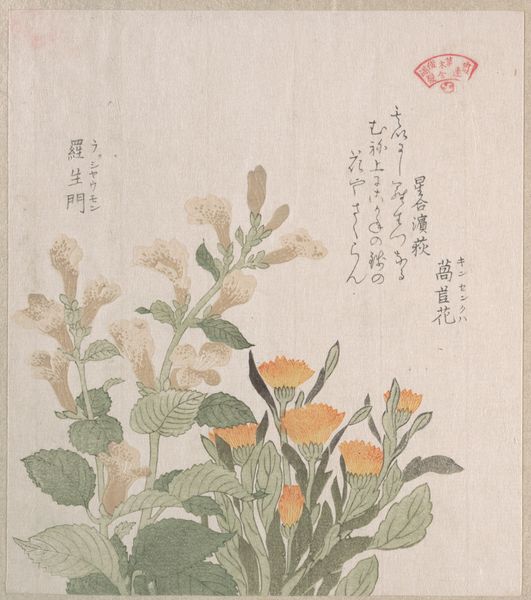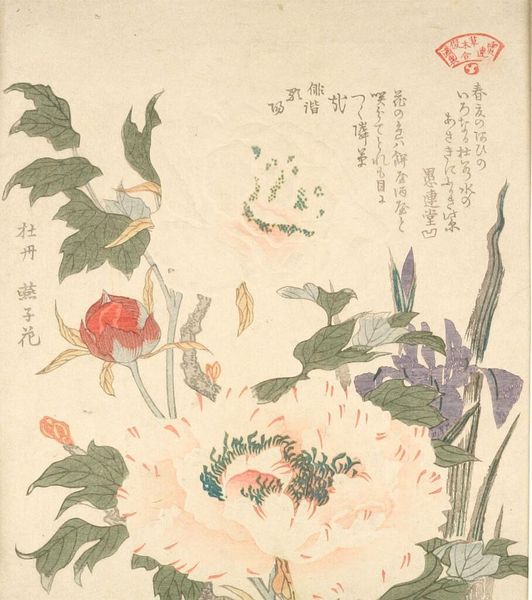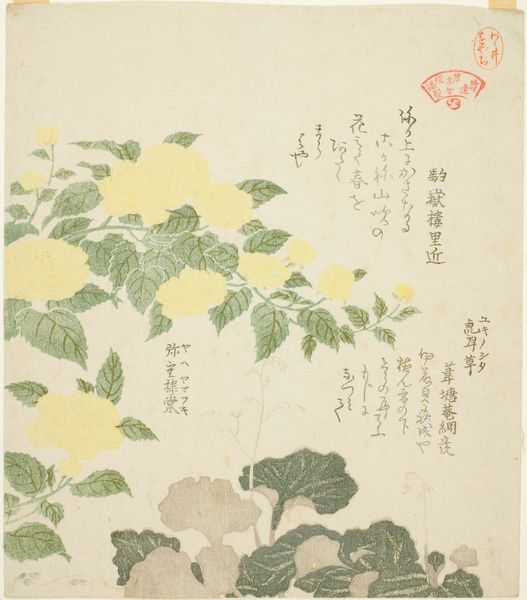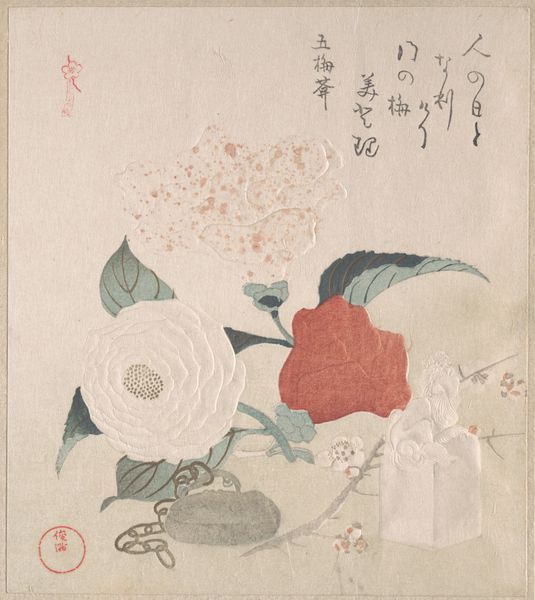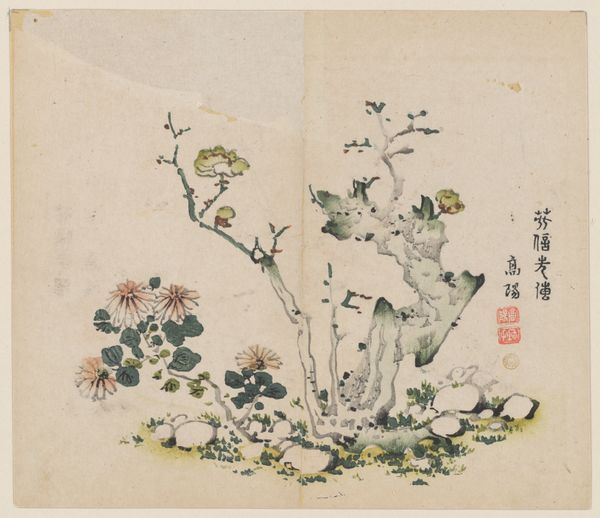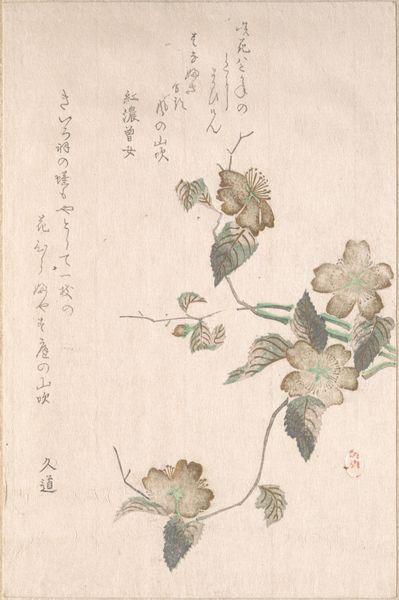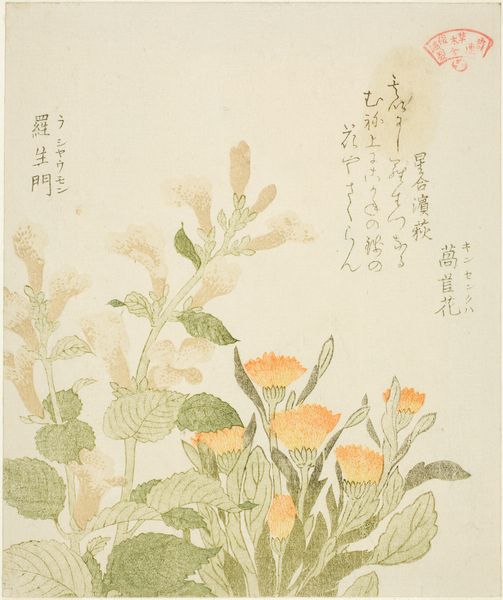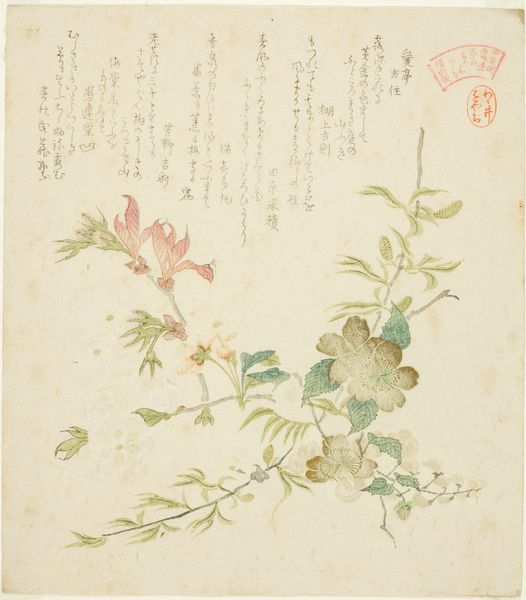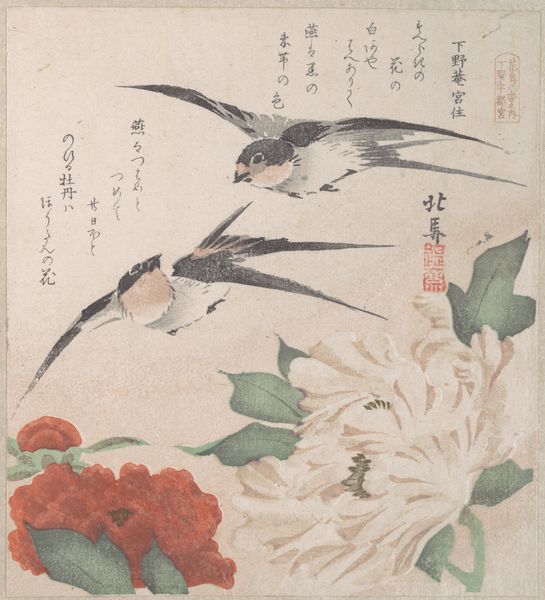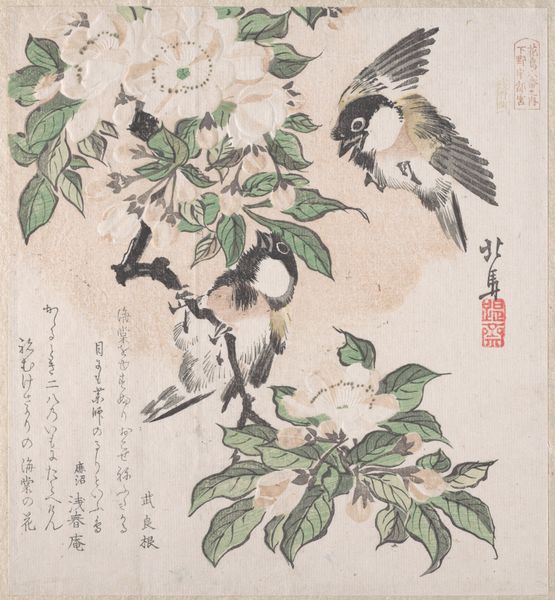
print, watercolor, woodblock-print
#
water colours
#
ink painting
#
ink paper printed
# print
#
asian-art
#
landscape
#
ukiyo-e
#
watercolor
#
woodblock-print
#
botanical art
Dimensions: 8 1/4 x 7 3/8 in. (21 x 18.7 cm)
Copyright: Public Domain
Editor: This woodblock print, "Peonies and Iris" by Kubo Shunman, dates to the 19th century and is currently held at the Metropolitan Museum of Art. I’m struck by the texture of the paper itself; you can almost feel the fibers. What is your perspective on this piece? Curator: Well, immediately I consider the socio-economic context of Ukiyo-e prints. These weren't high art initially, right? They were mass-produced images, relatively inexpensive, consumed by a broad segment of the urban population. It’s ink, paper, printed. That paper quality matters. What does that roughness communicate, or perhaps conceal about its consumption? Editor: So, you are focusing on the print’s accessibility due to the materials used? Curator: Exactly. The very act of printing these images—the repetitive labor, the distribution networks—those factors inform our understanding as much as the delicate rendering of the flowers. Consider the labour involved. The woodblock carver, the printer themselves… their skill shaped this image as surely as Shunman’s initial design. Editor: That's a fascinating way to think about it. I tend to focus on the image itself, the delicate colors and composition, the harmony of the natural forms, rather than thinking of it as a product of labour. Curator: And how does that tension between the delicate aesthetic and the reality of mass production influence our reading of beauty? Is it still beauty if we understand it’s manufactured? Editor: I see your point. Thinking about the means of production definitely adds a layer of complexity that I hadn't fully considered before. The ‘craft’ becomes a point to explore. Curator: Precisely. By acknowledging the labor and materials involved, we move beyond a simple appreciation of aesthetics. We begin to understand the print as a material object deeply embedded within its historical context. Editor: Thanks! Now I see this print as both art and commodity. Curator: That duality is at the heart of its enduring appeal, and our investigation into artistic worth.
Comments
No comments
Be the first to comment and join the conversation on the ultimate creative platform.
